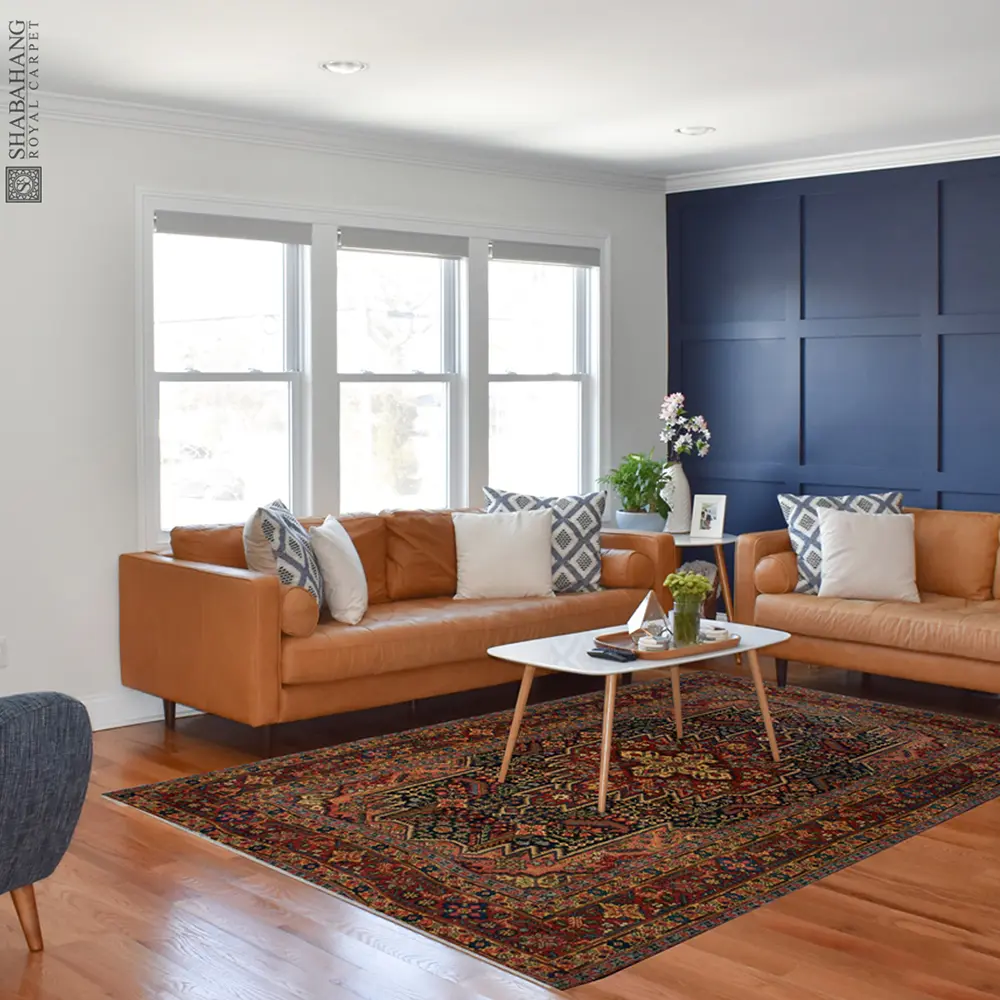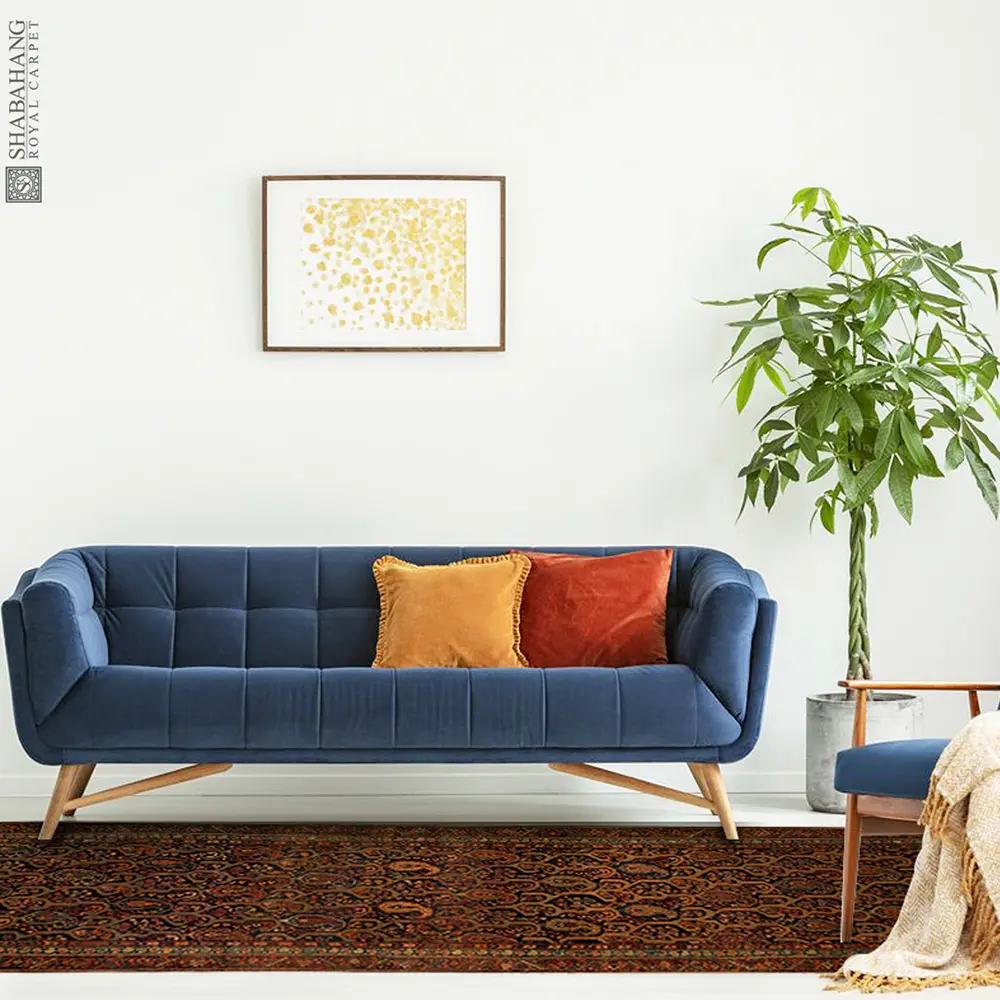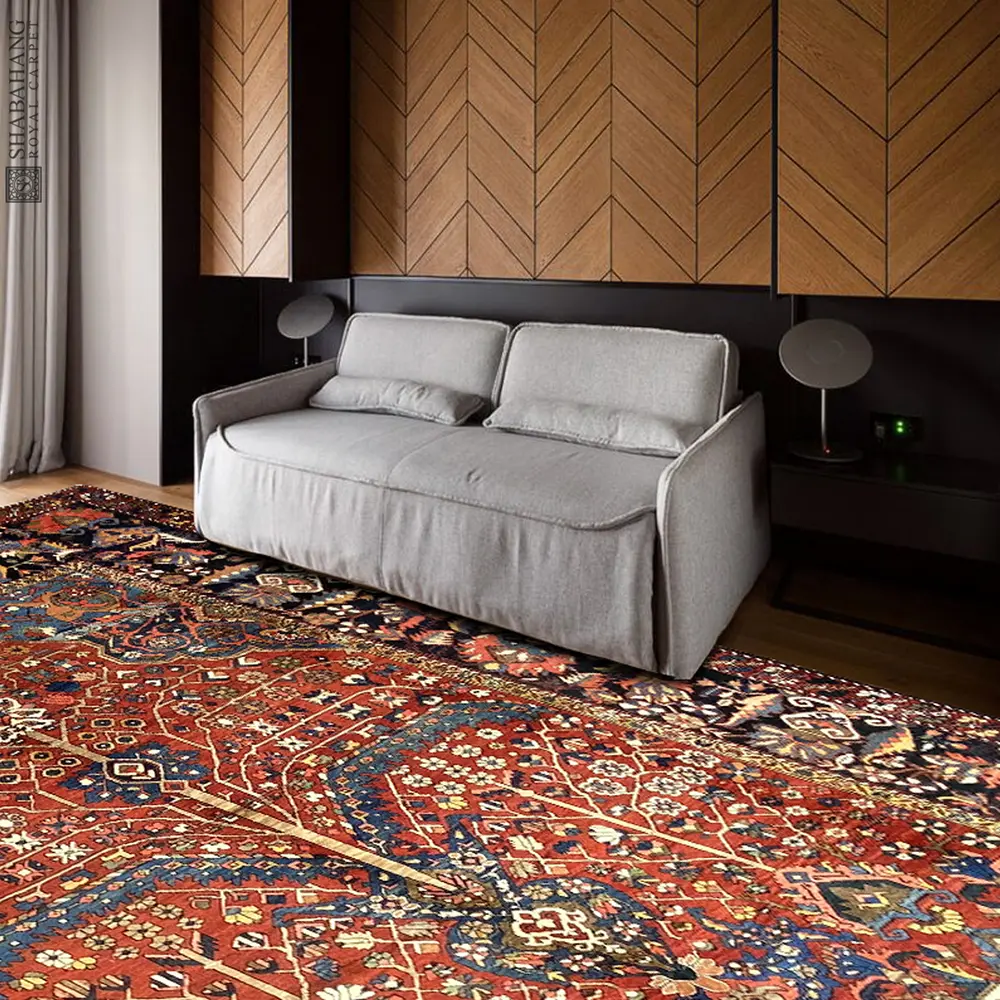Rugs may initially appear to be a somewhat unimportant accent to put in your home, but the truth is quite the reverse. Rugs have many advantages that improve your home’s aesthetics and operate as useful solutions.
We are aware that finding a nice rug can take time and frequently be frustrating. This article is a great place to start if you want to know about rugs and anything about these valuable accessories for the home.
What Is The Difference Between Rug And Carpet?
Technically speaking, “Rugs” in our context should be called “Throw Rugs“. Typically, they don’t have a second layer. As a result, “Rugs” would have characteristics such as being unable to maintain their shape, frequently requiring anti-slip mats, and typically being considerably smaller and lighter than carpets.
This flooring may often be put into a giant washing machine and is much easier to clean. Such floor covering costs much less to clean since it takes less attention.
Large floor coverings like carpets typically have a second layer that increases their thickness and preserves their shape. Typically, cleaning carpets requires manual labor, which raises the expense of cleaning.
Why Are The Rugs Important?
We all know that our surroundings have an ongoing impact on how we feel. Rugs are frequently referred to as the “soul of the room” since they provide your area with color, style, and personality. This has an impact on our mood, which affects our mental health.

Rugs also act as sound absorbers and enhance the room’s acoustics. This ultimately has an impact on both your health and mood. In light of this, adding rugs to your home’s living room, dining room, main bedroom, and the kitchen is crucial.
Here are the most essential benefits of rugs.
Top 4 Benefits of Rugs
- Do you have tile or wood floors throughout your space? Going around on such rough surfaces can be uncomfortable and chilly. Add some plush rugs to your flooring to instantly convert them from plain to opulent. A corridor runner or an area rug in the living room will make the room feel cozier and more welcoming.
- The last thing you need in the winter is a chilly home—staying warm outside is challenging enough as it is! While turning on your heater is a simple fix, you might not be aware that carpets are excellent for insulation. Place thick area rugs in every room to help preserve heat and reduce energy costs. Add an insulated rug pad below to take it a step further.
- Rugs may link several places, which is another advantage. You can quickly achieve more harmonious home decor by utilizing various rug kinds with a typical pattern or color scheme.
- Rugs’ capacity to reduce sound is one of their most valuable features. Area rugs must be the next item on your list for home design if your house has echoing noises or the impression that you may hear talks from room to room. Your rug will be more effective at absorbing sound and decreasing noise if it is plusher and thicker.
What Makes Rugs Beneficial to Your Health?
Rugs might impact your physical health. Walking on hard surfaces can be damaging to your feet. Your entire body will start to feel uncomfortable once your feet do.
Walking and standing on hard surfaces can wear out your body and hurt your legs, feet, and low back. Hard flooring does not flex, bend, or provide cushioning, which is why. By effectively massaging the bottom of your feet and giving padding to protect you, a rug underfoot offers comfort and therapy in addition to protecting your body.
When purchasing a rug, look for natural and sustainable fibers, such as wool, jute, sisal, and organic cotton. Pay particular attention to the underlay pads and rug backing likely created at a low cost. Wool, jute, and natural latex make excellent substitutes.
Numerous rugs have toxic materials, including flame retardants, glues, and dyes. Rugs are frequently treated with harsh chemicals to repel water and stains, even when safe materials are used to produce them. The list of poisons discovered in rugs is often extensive and harmful. Fortunately, there are lots of natural and safe carpeting options.
Why are Rugs Often Expensive?
The material a rug is made of is one of the most critical variables in determining what is written on its MRP tag. Finding the answer to this question can help you understand why some carpets are so expensive and why some, despite having a similar design to the more expensive ones, are more cost-effective.
The material impacts the rug’s lifetime, durability, and washing ease—three significant elements that affect how much carpets cost.
One of the following materials could be used to make the rug:
- Wool: One of the most often used materials in rug weaving is wool. It is strong, resilient, and naturally renewable. You can use a woolen rug virtually all your life without worrying about the color or design deteriorating. Wool carpets are far more comfortable to walk on than synthetic ones because of their plush feel. That explains why wool is the most expensive material for area rugs, right?
- Silk: Silk is another natural textile that is second only to wool in terms of durability and luxury. Silk carpets have long been sought after all over the world. Famous Persian and Oriental carpets are typically crafted from silk or a wool and silk blend. Why is silk so expensive for rugs? That is a result of their gleaming texture, which exudes luxury at every turn. To keep them feeling and appearing brand new, they need to be cleaned by professionals using only professional techniques. Because of their high level of luxury, these rugs are inappropriate for rooms that frequently host children, animals, or heavy foot traffic.
- Nylon: Nylon is a strong, adaptable synthetic fiber that can replace more expensive natural fibers. It can withstand heavy foot traffic and is suitable for children and pets. However, it also has drawbacks. Because of its high water absorption capacity, a spill could destroy your nylon carpeting.
- Polyester: Polyester is a synthetic fabric that is less expensive than nylon, stain-resistant, and less sensitive to spills. Polyester rugs, however, are unquestionably less resilient and have a very short lifespan. The rugs break down considerably more quickly and efficiently due to the loose fibers.
- Hemp and jute: Hemp and Jute are two less expensive natural fabric options often used to create rugs for busy households and spaces with heavy traffic. They are less costly than their wool and silk counterparts and are commonly used to develop dhurries and flatweave rugs. So, choose a dhurrie made of jute and hemp instead of spending money on pricey area rugs.
Hand-tufted or hand-knotted rugs with naturally dyed premium wool or silk yarns are examples of high-quality carpets. These rugs are renowned for their sturdiness, plushness, and elaborate patterns.
Traditional rug-making methods like hand knotting and hand tufting result in extraordinary beauty and craftsmanship rugs. Natural dyes increase the rug’s richness and depth of color, elevating it into a priceless work of art.
5 Countries That Make The World’s Best Rugs
Some nations make fine-quality hand-made carpets, but rug connoisseurs are likely most familiar with Iran, Turkey, and Pakistan. These nations produce top-quality hand-made rugs, including Oushak, Persian, Kilim, and other well-known carpets. Which countries make the most rugs globally, then?
- Iran: Nobody creates high-quality, hand-made rugs better than the Iranians. Iran is a significant rug exporter, and their hand-made rugs are well-known worldwide. Iran is the origin of the famous Persian Rug and other hand-made carpets like the Kafkazi rug and Isfahan rug. These carpets are the ideal high-end rug because of their detailed patterns and gorgeous natural color combinations. Many Persian rugs last for over a century.
- Pakistan: Pakistan has long been a center for fine hand-made rugs, and the range of designs that you can find there is astounding. Pakistani Rugs offer a large selection of unique hand-made rugs that are the ideal blend of value, style, and quality.
- Kazakhstan: Kazakhstan produces some of the most distinctive hand-made rugs in the world, despite being a small rug producer on a scale of production. Carpet weavers weave Kazak rugs with natural wool and goats’ hair for strength and frequently feature plant and animal imagery. Kazak carpets are among the most well-liked hand-made rugs worldwide due to their striking traditional colors and designs.
- India: Many of the finest hand-made carpets, such as Persian Rugs, Ziegler Rugs, and handcrafted Oushak rugs, are created in India. They are more reasonably priced and the best choice for those seeking economical solutions.
- Turkey: hand-made Turkish rugs are the most popular rug design worldwide, second only to Persian rugs. Turkish rugs are renowned for their resilience, distinctive patterns, and plush wool.
Final Thoughts
As you can see, rugs are much more than they first appear! Rugs have several advantages that increase the comfort and coziness of your area in addition to their aesthetic appeal.
If you are looking for a quality rug, make sure you buy from a reliable online rug store that sources hand-made rugs directly from the weavers!
Shabahang Royal Carpet can provide you with the best quality rugs.
To learn more about rugs, carpets, or other home flooring products, visit Shabahang Royal Carpet or contact us!



